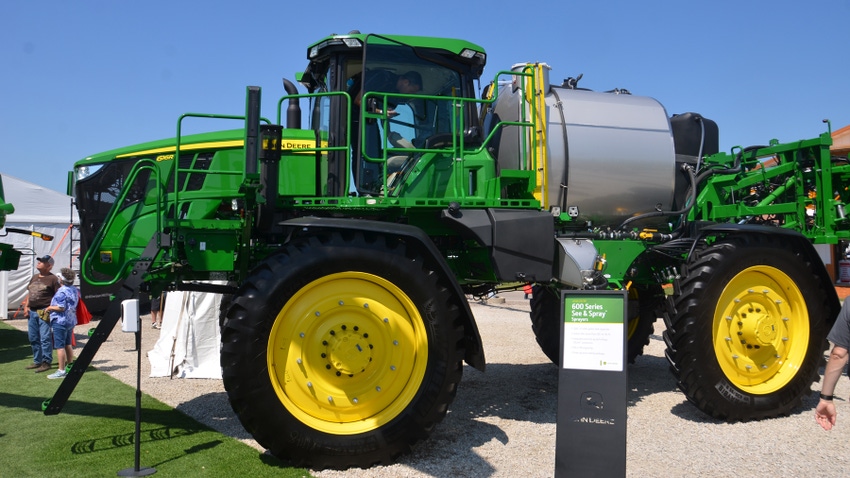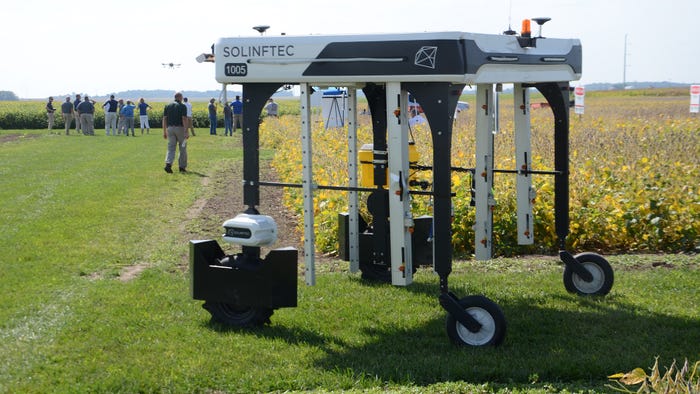
Application technology that sprays only weeds is not a new idea. WeedSeeker was introduced in the U.S. in the mid-’90s, and was capable of distinguishing between brown and green and spraying only green areas.
“Glyphosate-tolerant crops came along, making weed control so cheap that the technology was parked,” explains Bryan Young, Purdue Extension weed control specialist. “Today, with glyphosate-resistant weeds and more expensive herbicide programs, automation technology is getting another look. Plus, today’s technology is green on green, distinguishing green weeds from green plants and triggering spraying of only weeds.”
Young believes automated spray applications could be one part of the future of weed control. “We also need newer, effective herbicides, and growers must learn to use cultural methods more and not rely on chemical controls so extensively,” he says.
To reap benefits that automated weed control might bring, several challenges must be addressed. “One major challenge is getting EPA on board,” Young says. “If you only apply chemical on 5% or 10% of the field, will EPA still view it as a broadcast application?”
Potential benefits of automatic spraying
Here are possible benefits machine learning and selective spraying could bring to agriculture:
Lower foliar herbicide costs. If you only spray 10% of a field, herbicide cost should be about 10% of the cost of spraying the whole field. Broadcast application of residual herbicides would still be needed.
Reduced environmental impact. Even if 40% of a field needs spraying, less than half as much chemical would be sprayed into the environment vs. a broadcast application. Will EPA adapt so that labels, regulations and reporting practices can capture the value of less total chemical application?
Less crop injury. If you’re only applying chemical where there are weeds, would specific herbicides be less likely to cause as much crop injury? Could labels be adjusted? Would compounds previously held back be more likely to be labeled?
Improved management of resistant weeds. “We’re waiting for them to tell us more and explain how this would play out,” Young explains.
More active ingredients in the market. As noted earlier, could herbicides left on the research shelf because they caused minor crop injury be pulled back out? What about active ingredients that may have been too expensive for mass production? If they were used in much lower quantities, could their development become economical?
Field maps of weed infestations by species. Can machine learning identify species and prepare a weed map, species by species? That could elevate prescription weed spraying to a whole new level.
Potential challenges of automatic spraying
Besides unanswered questions, new machine learning and automation in weed control could pose challenges. Here are some that Young foresees:
Initial equipment costs. Young expects price increases on new sprayers with this technology will be substantial. Precision Planting, currently developing technology that uses cameras to selectively spray, foresees their product as a retrofit option that would allow more farmers to access the technology. “For 20% to 30% the cost of a new sprayer, you could add state-of-the-art technology to your existing sprayer,” explains Bryce Baker of Precision Planting.

ROBOT AT WORK: This unmanned, ground-based vehicle from Solinftec can both scout crops and apply herbicides where needed.
Costs for subscriptions, added features. Some new technology for selective spraying may get around poor internet access by using low-level cellular communications. However, that usually brings an annual fee.
Complexity. If you’re filling a sprayer for a 40-acre field, how much product do you put in the tank? Will you actually spray 30 acres? 10 acres? 5 acres? Will you have a say in how sensitive the equipment is when deciding when to spray?
Technical issues. Things you’ve never considered, such as long shadows and target buffering, come into play. Will technology pick up weeds of different heights and not be thrown off by tall weeds next to short weeds? If a target weed triggers spraying, how much area around it also gets sprayed? Does the buffer area get full rate? Who sets these parameters?
EPA regulations. Even if you only apply chemical on 5% of the field, will EPA consider the whole field sprayed? Under current rules, Young suspects it would. “Getting EPA to address issues related to selective applications is a major hurdle that must be cleared,” he says.
Crop row spacing and travel direction. Especially with unmanned, automated ground units, row spacing and direction become important. How will the unit travel through the field?
Weeds under the crop row. Will the machine detect weeds in the row and trigger spraying? Or will those weeds be missed?
Compatibility with current technology. Can selective spraying technology work seamlessly with widely adapted, effective technologies such as pulse width modulation and direct injection?
Compatibility with high speed. Many growers cover hundreds of acres per day by spraying at high speeds. Can selective spray technology keep up at 15 miles per hour? Sheer physics demands that this question be answered. Young notes that at 15 mph, a sprayer travels 22 feet per second. That translates into a huge number of “spray or no spray” decisions that must be made quickly.
About the Author(s)
You May Also Like




